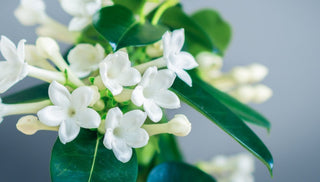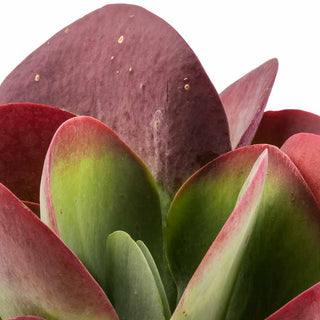☘ Origin: Tropical Rainforests of South East Asia
☘ Family: Arum
☘ Botanical Name: Alocasia
☘ Common Name: Elephant Ear Plant
Symbolism: Alocasia is said to be the plant in all the Western and Eastern versions of the fairytale of Jack and the Beanstalk. It thereby stands for seizing opportunities when they arise, even when they’re risky.
🍃 Shop Your Elephant Ears Plant Today!
🔆 Light
Position your Alocasia in medium to bright indirect sunlight spot. Give your plant a turn every few days to expose all sides to light for even growth from all sides.
💧 Water
Keep Alocasia plants moist all year; they are water-loving plants. There is a fine line with these plants. You want to keep the soil moist but not soggy. They require less water during the winter months because the plant is dormant.
Allow the top few centimeters of soil to become nearly dry before watering. This will help keep the soil evenly moist. Soggy soil makes the plant susceptible to fungal infections.
To give your plant the absolute best, room-temperature rainwater and bottled spring water are your best options. Any water containing sugar or salt will hurt your plant!
☁️ Humidity
Use pebble tray to raise the humidity around your Alocasia specially in the winter months or a humidifier. It will also appreciate regular misting year round using filtered-water. Keep them away from cold drafts from windows, doors, and air conditioning.
🌡️ Temperature
Elephant Ears plants will suffer below (15°C). Some varieties will die back during colder weather and re-sprout from the rhizome.
🧴️ Food
Alocasia plants can be heavy feeders, especially large specimens. Feed with liquid fertilizer once or twice a month; a 20-20-20 fertilizer formulation is recommended during the growing season.
🐾 Toxicity
Alocasia plants make stylish houseplants, but they can be harmful if chewed on or swallowed. They oxalate crystals that can cause mouth pain, nausea, vomiting, and diarrhea. Keep it away from children and pets.
➕ Additional Tips
Even with a short growing season in northern climates, these plants can grow rapidly. In the warm summer months, Alocasia plants can produce a new leaf every week, and each new leaf can be twice the size of the previous week's. The leaf shapes can vary from slim arrowheads to wide heart-shaped leaves that have colorful veins and a variety of textures: thick, waxy, slick, and glossy.
Once the plant is in its dormant period in the late fall and winter, it will begin resting. The rapid leaf growth will stop and the plant will likely remain as-is throughout the winter season. Continue to care for it, and the rapid growth will return the following growing season.



